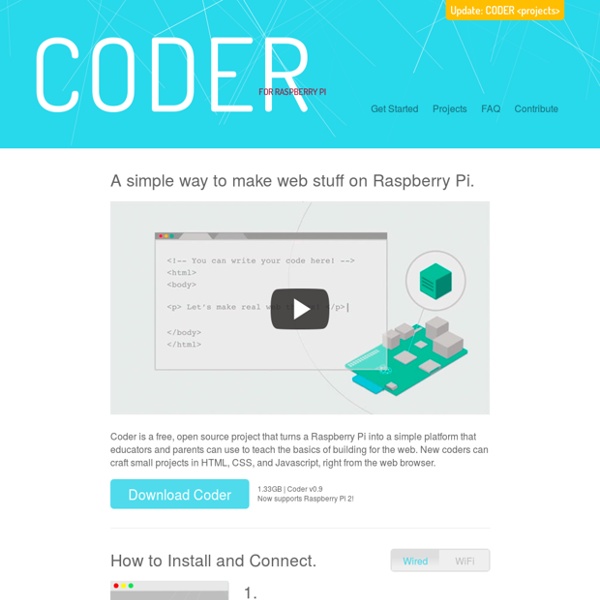Ask Ars: Why are some programming languages faster than others?
In our look at scientific computing and the continued longevity of Fortran in science and engineering circles, one of the recurring themes in the discussion that followed was performance. One of the big reasons that Fortran remains important is because it's fast: number crunching routines written in Fortran tend to be quicker than equivalent routines written in most other languages. The languages that are competing with Fortran in this space—C and C++—are used because they're competitive with this performance. This raises the question: why? Interpreting versus compiling There are many ways to categorize and define programming languages, according to the style of programming they encourage and features they offer. The divide is not hard; rather, there's a spectrum. This compilation process has several steps. This in-memory representation is then used to drive a code generator, the part that produces executable code. Actually executing the code happens later. Blurring the lines
Feel, Act, Make sense • Sen.se
Pencil Code
License
Version 2.0, January 2004 1. Definitions "License" shall mean the terms and conditions for use, reproduction, and distribution as defined by Sections 1 through 9 of this document. "Licensor" shall mean the copyright owner or entity authorized by the copyright owner that is granting the License. "Legal Entity" shall mean the union of the acting entity and all other entities that control, are controlled by, or are under common control with that entity. "You" (or "Your") shall mean an individual or Legal Entity exercising permissions granted by this License. "Source" form shall mean the preferred form for making modifications, including but not limited to software source code, documentation source, and configuration files. "Object" form shall mean any form resulting from mechanical transformation or translation of a Source form, including but not limited to compiled object code, generated documentation, and conversions to other media types. 2. 3. 4. 5. 6. 7. 8.
Raspberry Pi Pinout
3v3 Power The 3v3, 3.3 volt, supply pin on the Pi has a max current draw of 50 mA, enough to power a couple of LEDs but not much more. You should use the 5v0 supply instead, and use a regulator if you need 3v3. BCM pin 0 on Rev 1 board and pin 2 on Rev 2 board. WiringPi pin 8. It's easy to get started writing a digital HIGH or LOW to a GPIO pin, but you've got to remember a few things: Run your script as root Set your pin's mode to OUTPUT (1) Assuming you've installed WiringPi2-Python ( pip install wiringpi2 ) then try pasting the following into a .py file: import wiringpi2 as wiringpiHIGH = 1LOW = 0OUTPUT = 1INPUT = 0wiringpi.wiringPiSetup()wiringpi.pinMode(8,OUTPUT)wiringpi.digitalWrite(8,HIGH) Then run it with: sudo python myscript.py BCM pin 1 on Rev 1 board and pin 3 on Rev 2 board. require 'wiringpi2'HIGH = 1LOW = 0OUTPUT = 1INPUT = 0io = WiringPi::GPIO.newio.pin_mode(9,OUTPUT)io.digital_write(9,HIGH) BCM pin 4. Ground BCM pin 17. BCM pin 21 on Rev 1 board and pin 27 on Rev 2 board.
8 iPad apps to Teach Coding and Programming
With the changes in the National Curriculum for ICT in 2014 introducing a greater emphasis on coding and programming, there is a greater demand for easy to use programming tools for children. One of the best ones, Scratch, sadly doesn’t work on an iPad at the moment. Here are some alternatives that do. 1. Daisy the Dinosaur (Free) This free, fun app helps teach the basics of simple programming. It’s a simple, easy to use app which gives children an easy introduction into simple programming. 2. Developed by the same team behind Daisy the Dinosaur, Hopscotch is a free app which allows children to create their own games and animations with a simple programming language. When you’re finished with a script, press play to see the code in action. 3. The Bee Bot app from TTS has been developed to mimic the familiar Bee-Bot floor robot. The app has been developed with 12 levels encouraging progression. It’s an excellent free app, and I highly recommend it! 4. 5. 6. 7. 8. Got any other favourites?
TideSDK | Create multi-platform desktop apps with HTML5, CSS3 and JavaScript
Adafruit Python
CodeWeek.it | il sito italiano di CodeWeek.EU
Framework .NET
Un article de Wikipédia, l'encyclopédie libre. Le .NET Framework[1] est un framework pouvant être utilisé par un système d'exploitation Microsoft Windows et Microsoft Windows Mobile depuis la version 5 (.NET Compact Framework). Une version légère et limitée fournie avec un moteur d'exécution fonctionnant à l'intérieur d'un navigateur ou d'un périphérique mobile est disponible sous le nom de Silverlight. La version 3.0 du framework est intégrée à Windows Vista et à la plupart des versions de Windows Server 2008 ou téléchargeable depuis le site de l'éditeur Microsoft. Le framework .NET s'appuie sur la norme Common Language Infrastructure (CLI) qui est indépendante du langage de programmation utilisé. Il a pour but de faciliter la tâche des développeurs en proposant une approche unifiée à la conception d'applications Windows ou Web, tout en introduisant des facilités pour le développement, le déploiement et la maintenance d'applications. Elle est composée des deux principaux blocs :
AirCasting
Apache JMeter - Apache JMeter™



